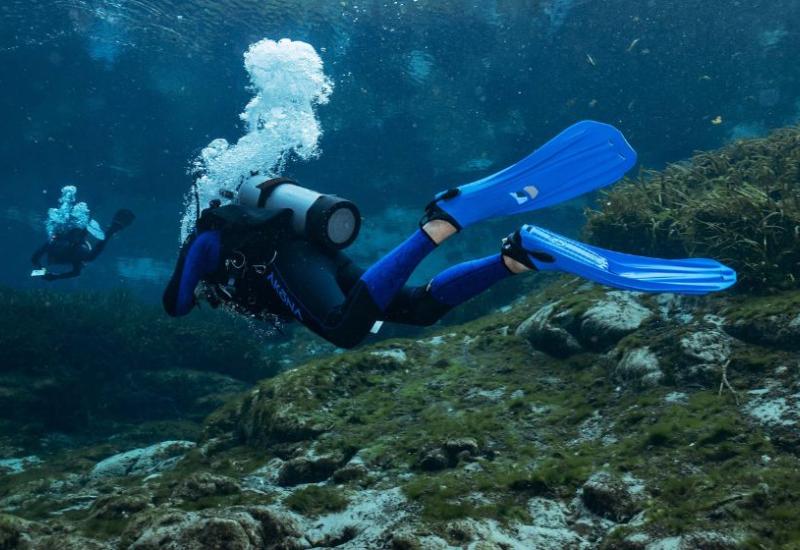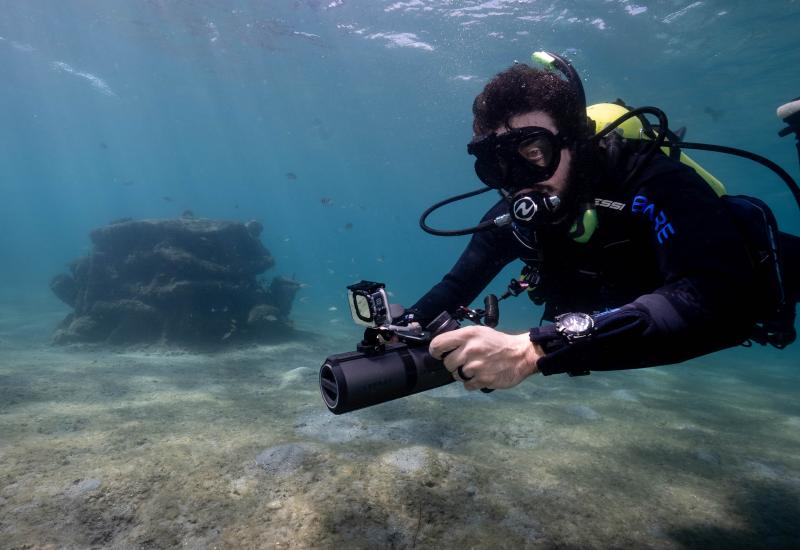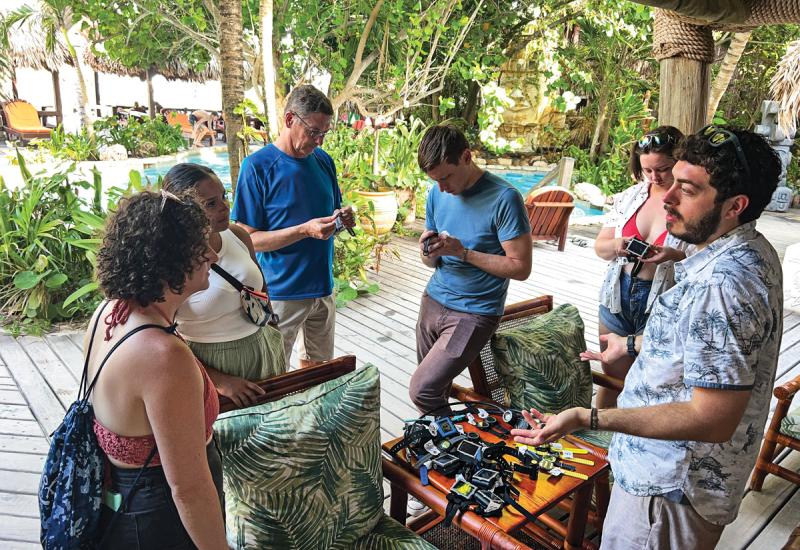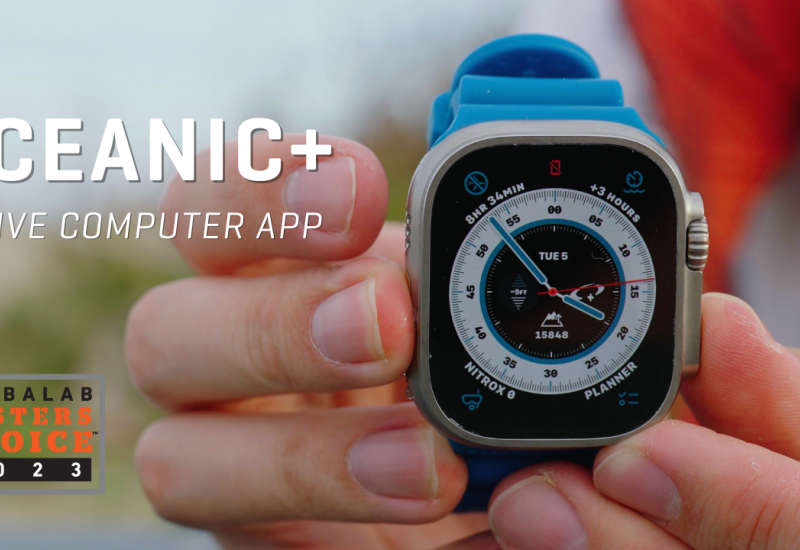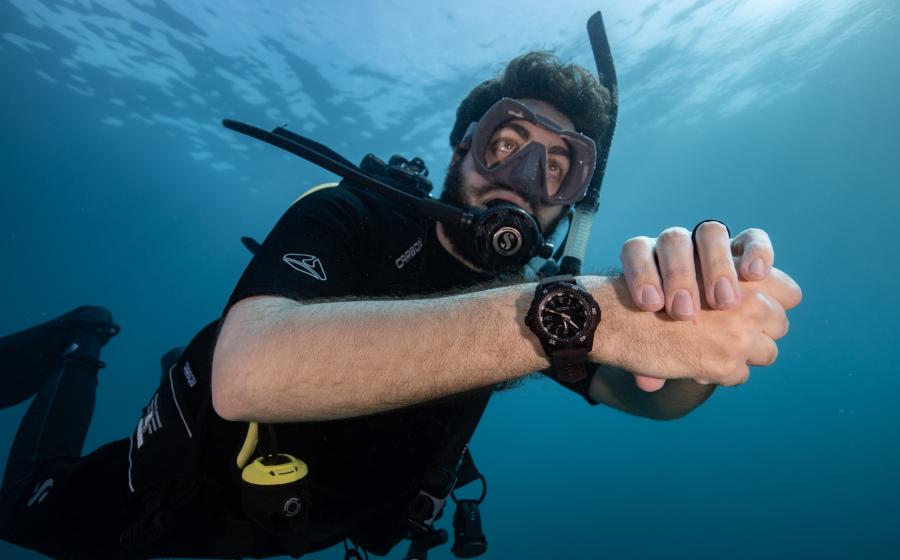The Best Scuba Regulators of 2019 Reviewed
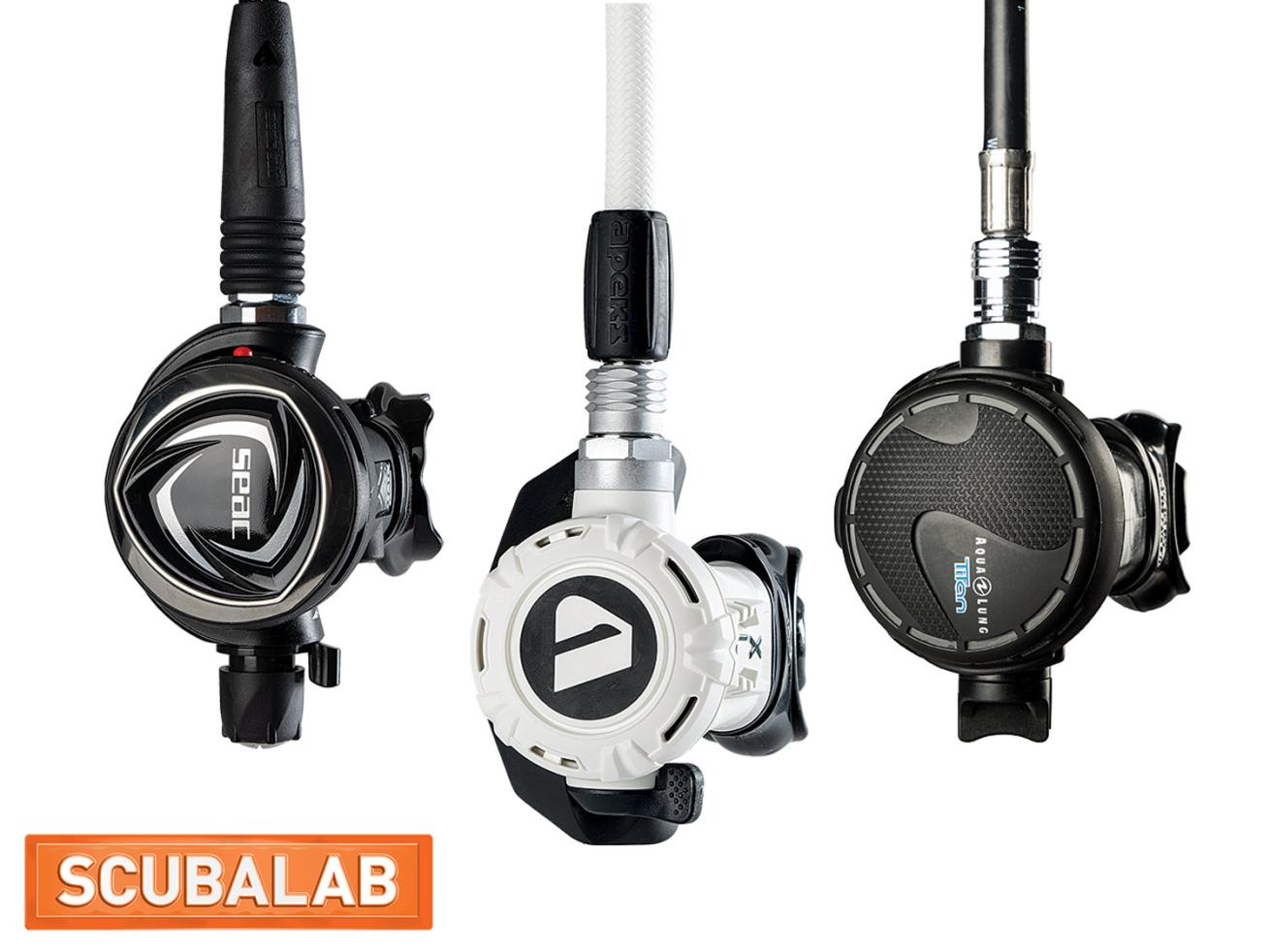
Jon WhittleWe test ten of the best new rec and tec scuba regulators.
*Editor's Note: See the latest 2020 regulator review here.*
A high-quality scuba regulator that provides smooth, easy breathing is a critical part of any diver's gear setup. That's why we took this crop of new regulators to an ANSTI breathing simulator and in the water for a thorough review of the best scuba regulators of 2019. ScubaLab's team of test divers gave their scores on a variety of factors, offered comments and picked their favorites.
Check out our review for the best scuba regulators of 2019 below, and visit our gear page for more on the latest ScubaLab reviews.
How we test
Objective testing was conducted on an ANSTI wet breathing simulator that measures effort—“work of breathing”—required to move air through a regulator as it is subjected to a series of depths and breathing rates. The testing was done at Dive Lab, a commercial testing facility in Panama City Beach, Florida.
Tests are performed at an HP supply pressure of 750 psi (+/- 25 psi). Regs are tested in the face-forward position, and those with breathing adjustments are set at the wide-open/no- free-flow point.
The simulator pressurizes the chamber to simulate depths of 132 feet of seawater, 165 fsw and 198 fsw. Each “breath” by the machine moves 2.5 liters of air through the regulator, and we do this at rates of 15, 25 and 30 breaths a minute. These precise volumes of air—2.5 liters multiplied by the breathing rate—are called Respiratory Minute Volumes (RMVs).
Why do we test at these depths and breathing volumes?
- 37.5 RMV @ 132 fsw: This represents the maximum recreational depth at a somewhat aggressive breathing rate.
- 75 RMV @ 132 fsw: This simulates the potential demand at maximum recreational depth for a diver at an extremely heavy work rate, or loosely simulates two divers buddy breathing at a somewhat aggressive rate.
- 62.5 RMV @ 165 fsw: This rate represents the European conformance standard EN250. This is also the depth and breathing rate commonly used by manufacturers when determining a regulator’s performance.
- 62.5 RMV @ 198 fsw: This is the U.S. Navy’s Class A test depth and breathing rate (although the Navy uses a higher HP supply pressure).
The simulator monitors how much effort is required to “breath” in and out, measuring the work of breathing in joules per liter (j/L). As depth and breathing rate increase (and with it, the density of the air being moved), the work gets harder. Many modern regs are able to perform at 37.5 RMV at 132 fsw with less than 1 j/L of work.
If a reg doesn’t exceed the test parameters in our standard tests—the toughest of which a human diver would be hard-pressed to keep up for more than a couple of minutes—we push it to more-extreme conditions.
We don’t test on the simulator for a pass/fail grade, but to objectively gauge regs’ performance in carefully controlled conditions. You can see how each reg performed on the breathing simulator in the charts that accompany the reviews.
Ergonomic testing was conducted at Alexander Springs in central Florida by a team of divers who evaluated each reg in the following categories, assigning a score from 5 (excellent) to 1 (poor), and recording observations and comments about the comfort and performance of the reg. The ergo test categories were:
- Ease of breathing in swimming position: How well does the regulator deliver air when you are propelling yourself forward in a standard swimming position?
- Ease of breathing in face-up position
- Ease of breathing in head-down position
- Wetness in normal swimming position: During normal swimming, how dry does the regulator breathe?
- Wetness in face-up position
- Wetness in head-down position
- Bubble interference: How well does the reg deflect bubbles from your field of view?
- Ease of clearing: How difficult is it to clear the regulator by exhalation or using the purge?
- Purge stiffness: Is it soft and progressive or forceful and abrupt?
- Venturi lever: Is the Venturi control easy to use and effective at blocking free-flows on the surface and at depth?
- Breathing adjustment: Is the adjustment easy to find and use, and is it effective?
- Comfort of second stage: Overall comfort, taking into account its size, shape and weight.
- Noise: Does the reg operate with excessive noise, such as rasping or rattling?
Regs are also evaluated for ease of setting up the first stage and hose arrangements.
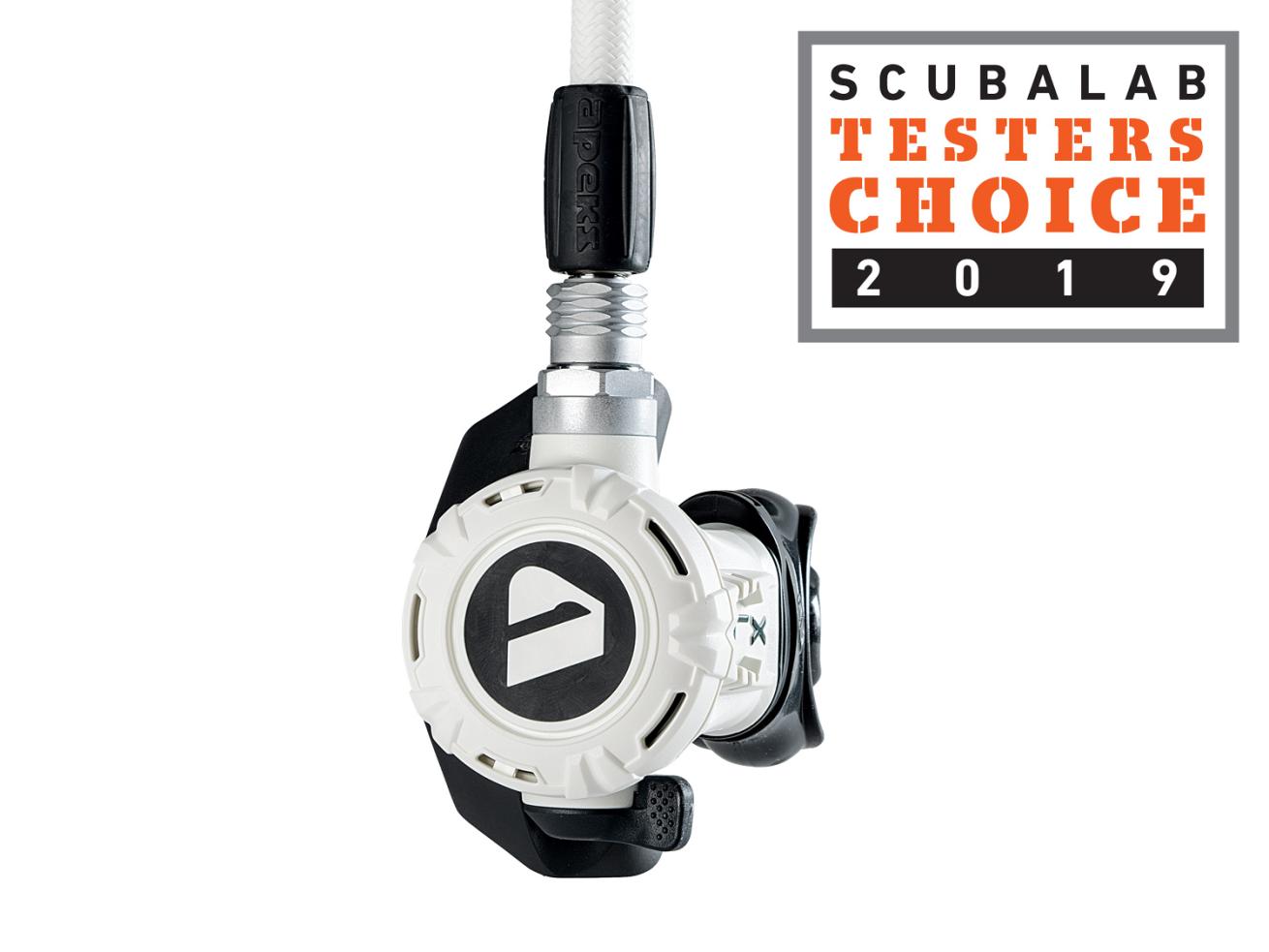
Jon WhittleApeks XL4+
Price $580 | Contact apeksdiving.com
Apeks
XL4+
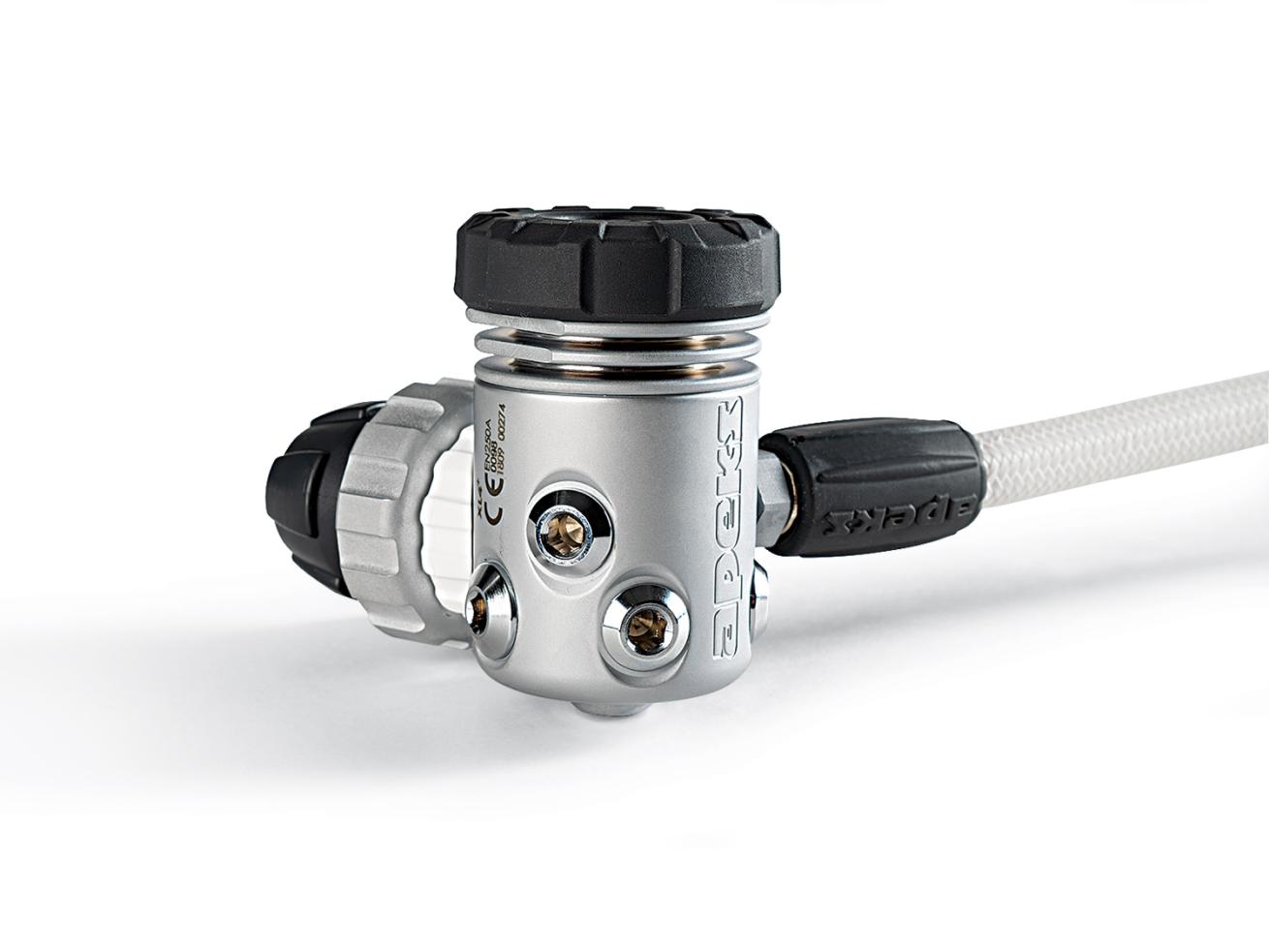
Jon WhittleApeks XL4+ First Stage
One of our few complaints with the original Apeks XL4 was the lack of a second HP port—a feature we’re glad to see on the new XL4+. Otherwise (aside from the all-white color scheme) the Plus has all the attributes that made the original XL4 a winner. Designed for cold-water reliability, the first stage weighs nearly 2 pounds, with lots of heat-retaining mass and long, heat-exchange fins. The second stage is tiny and light (4½ ounces on our scale); that and the reg’s smooth, quiet performance earned it the top score for comfort. “You forget you even have it in your mouth,” one tester commented. The reg took excellent scores on the simulator, and divers praised its dry, easy air delivery. With dive-all-day comfort and solid performance, the XL4+ is our Testers Choice for regs over $500.

*Scuba Diving*Apeks XL4+ Breathing Simulator Results
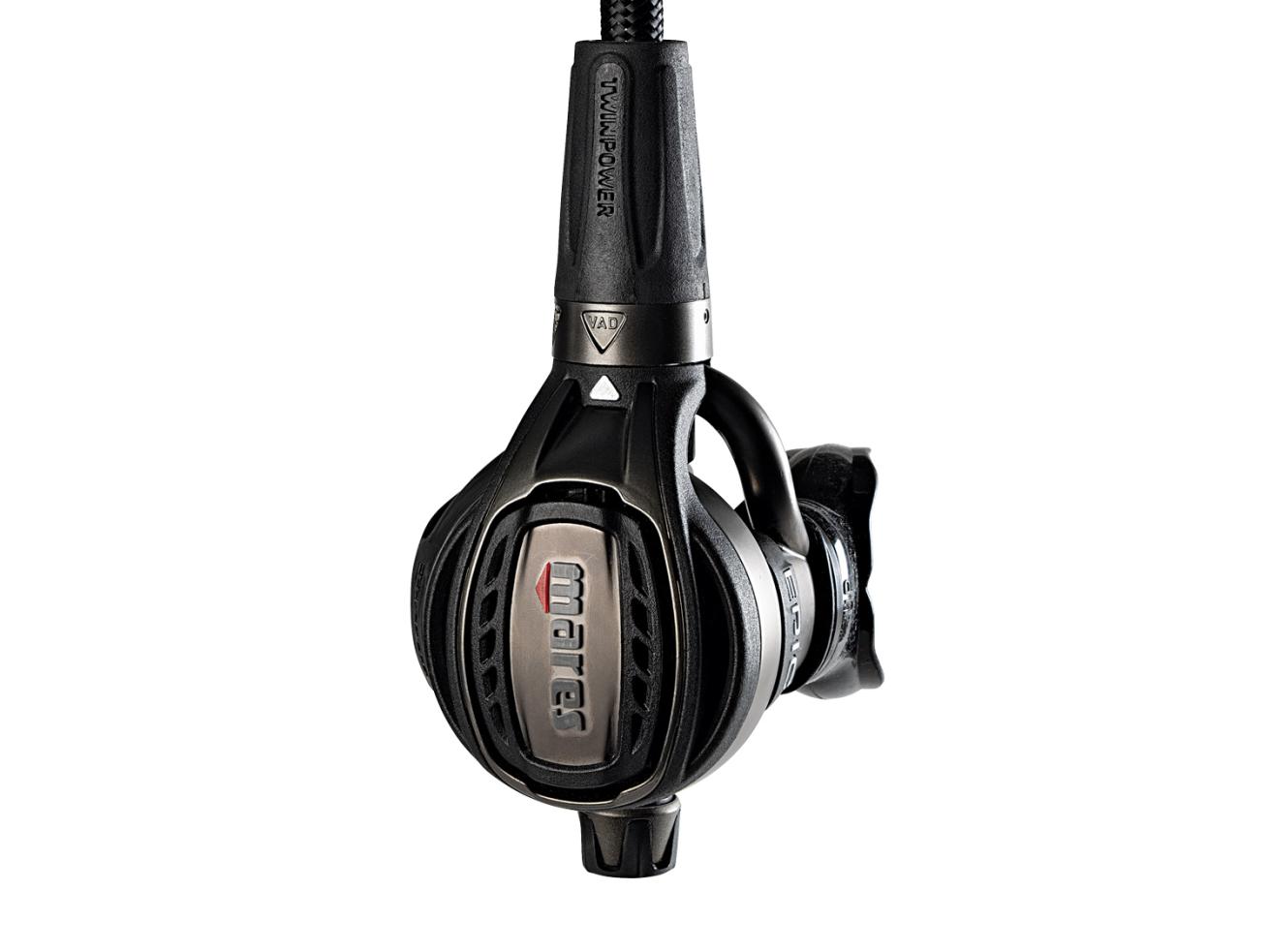
Jon WhittleMares Epic ADJ 82X
Price $875 | Contact mares.com
Mares
Epic ADJ 82X
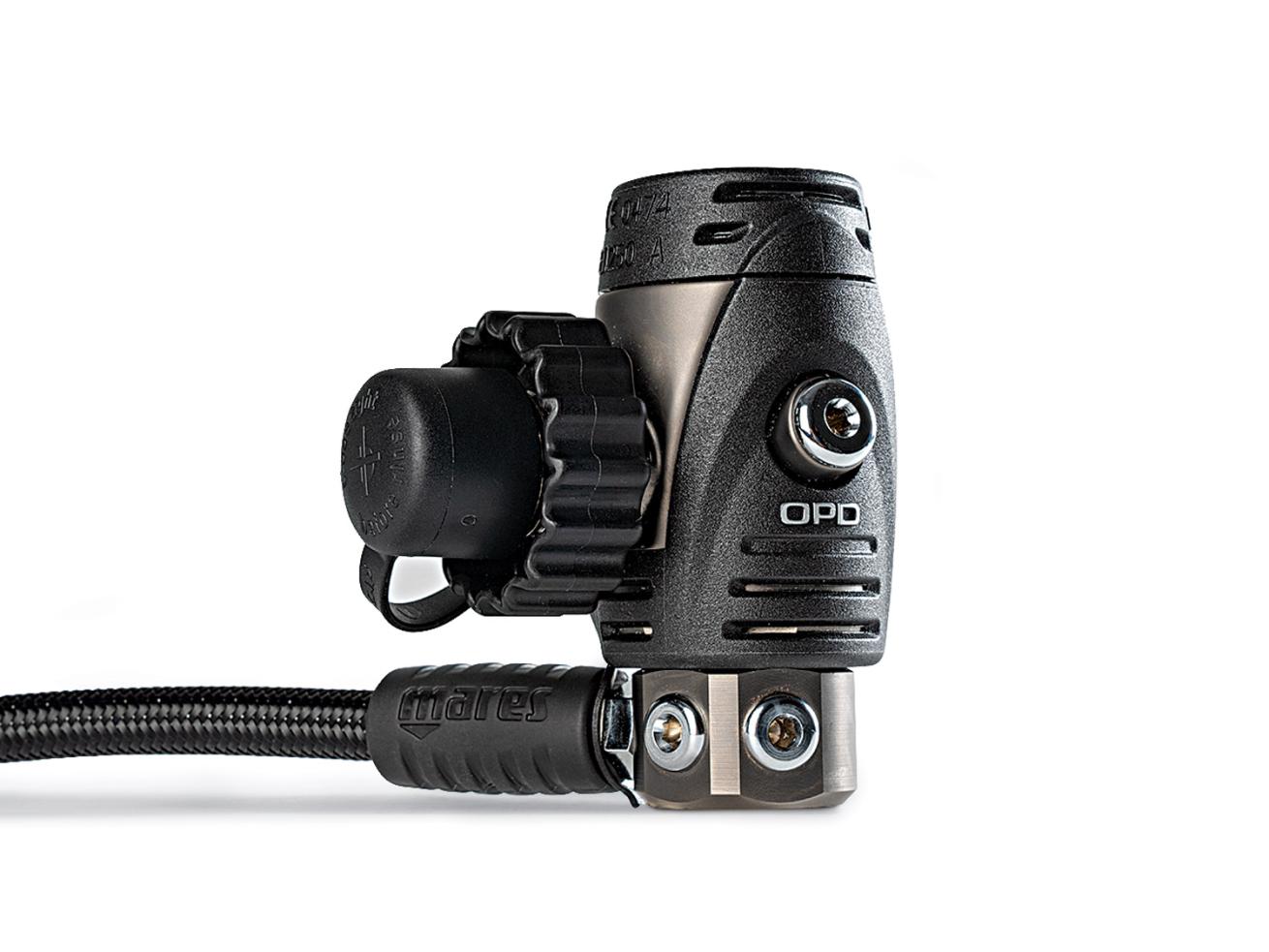
Jon WhittleMares Epic ADJ 82X First Stage
Designed to handle extremes of cold and depth, the top-of-the-line Mares Epic has an all-business look about it, and a feel to match. The sealed-diaphragm first stage is a solid 2 pounds (in yoke version) with an indestructible heft to it. “Built like a tank,” one test diver noted. It’s also designed to let you tailor its setup and performance to your needs. The 360-degree rotating turret has four LP ports on the outside and a fifth on the top, and the pair of HP ports are at offset angles for precise hose and transmitter arrangement whether the turret is top or bottom. The all-metal second stage is fitted with both a breathing-resistance knob and Mares’ throttle-like Twin Power control; with all controls wide open, it delivers air almost before you inhale. Testers rated it very good for ease of breathing in all positions but found the second stage a bit heavy; some noted the reg probably isn’t for the new diver. It’s also worth noting that our test conditions—warm water on a sunny Florida day—didn’t represent the kind of unforgiving environment the Epic was built to contend with.

*Scuba Diving*Mares Epic ADJ 82X Breathing Simulator Results
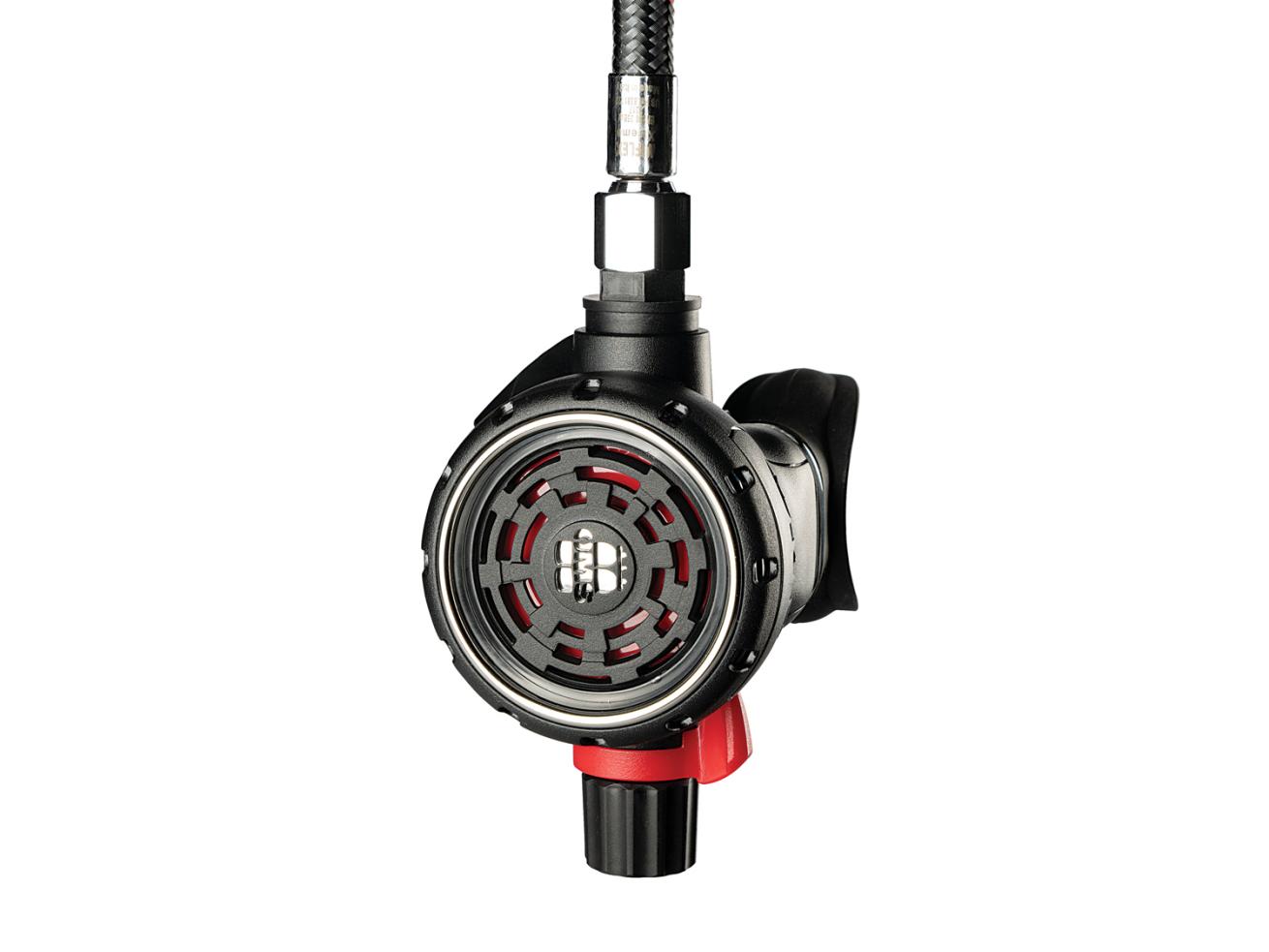
Jon WhittleOMS Airstream C Evoque Lite
Price $529 | Contact omsdive.com
OMS
Airstream C Evoque Lite
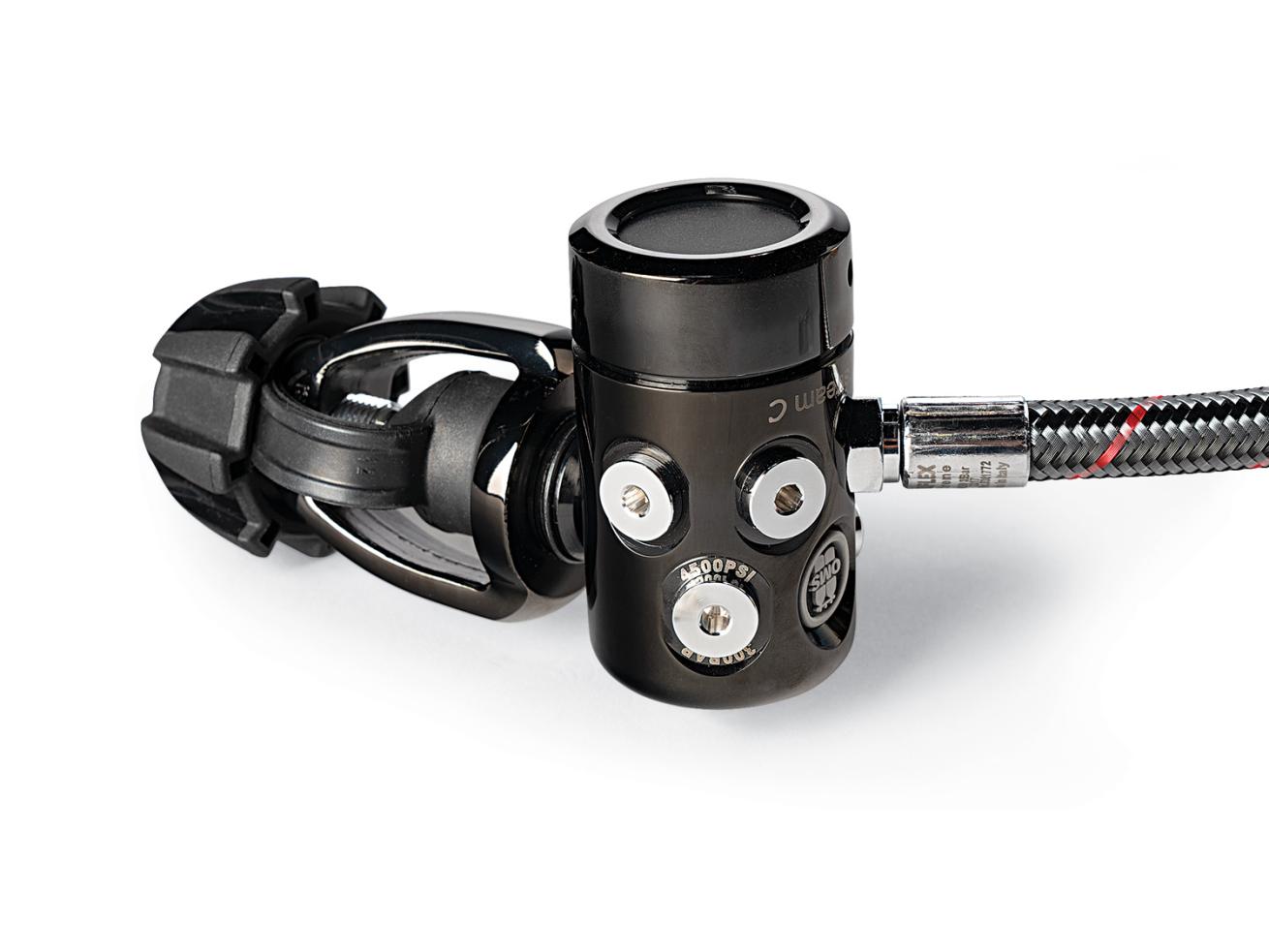
Jon WhittleOMS Airstream C Evoque Lite First Stage
The first stage of the OMS Evoque C is distinct from the other OMS reg here, but the second-stage body of the Lite looks almost identical. However, some of the details and internals are actually quite different. The Lite’s second stage has a plastic inlet tube and less metal here and there to shave off a few grams and live up to the “Lite” name. In fact, “light”—along with “quiet” and “smooth”—showed up in the comments of multiple divers, who scored the Evoque Lite excellent for ease of breathing in swim position and very good in other positions. The breathing adjustment, which has a clutch to prevent overtightening, was rated very good, with a noticeable effect on the breathing effort. Test divers found the Lite’s Venturi control effective enough at stemming free-flows, but also stiff enough in operation that most mentioned it. Port placement on the PVD-coated first stage was relatively convenient for a fixed design, with the two center LP ports routing hoses quite close over the shoulder; the setup worked as well whether the HP ports were on top or bottom.

*Scuba Diving*OMS Airstream C Evoque Lite Breathing Simulator Results
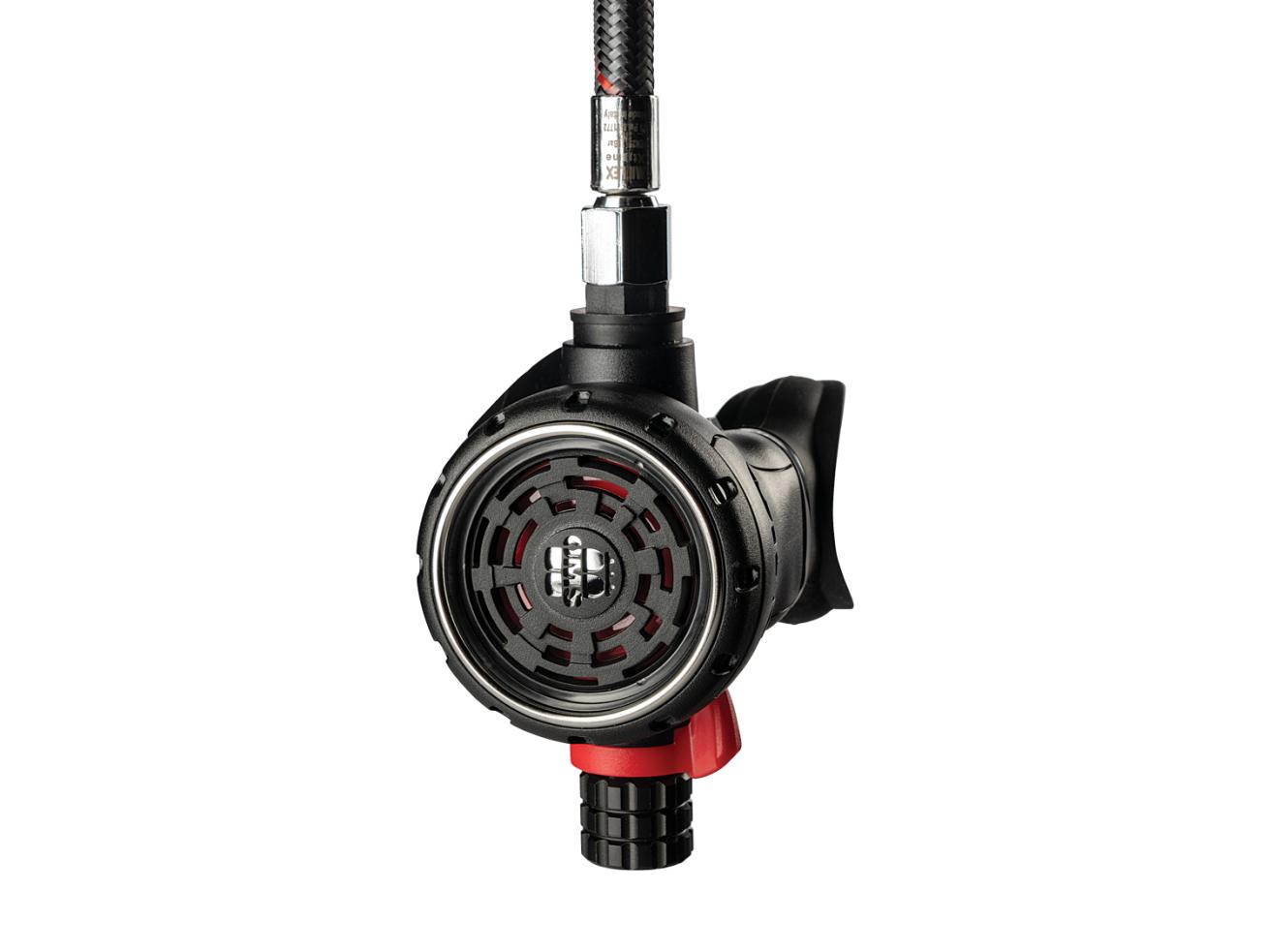
Jon WhittleOMS Airstream Evoque
Price $609 | Contact omsdive.com
OMS
Airstream Evoque
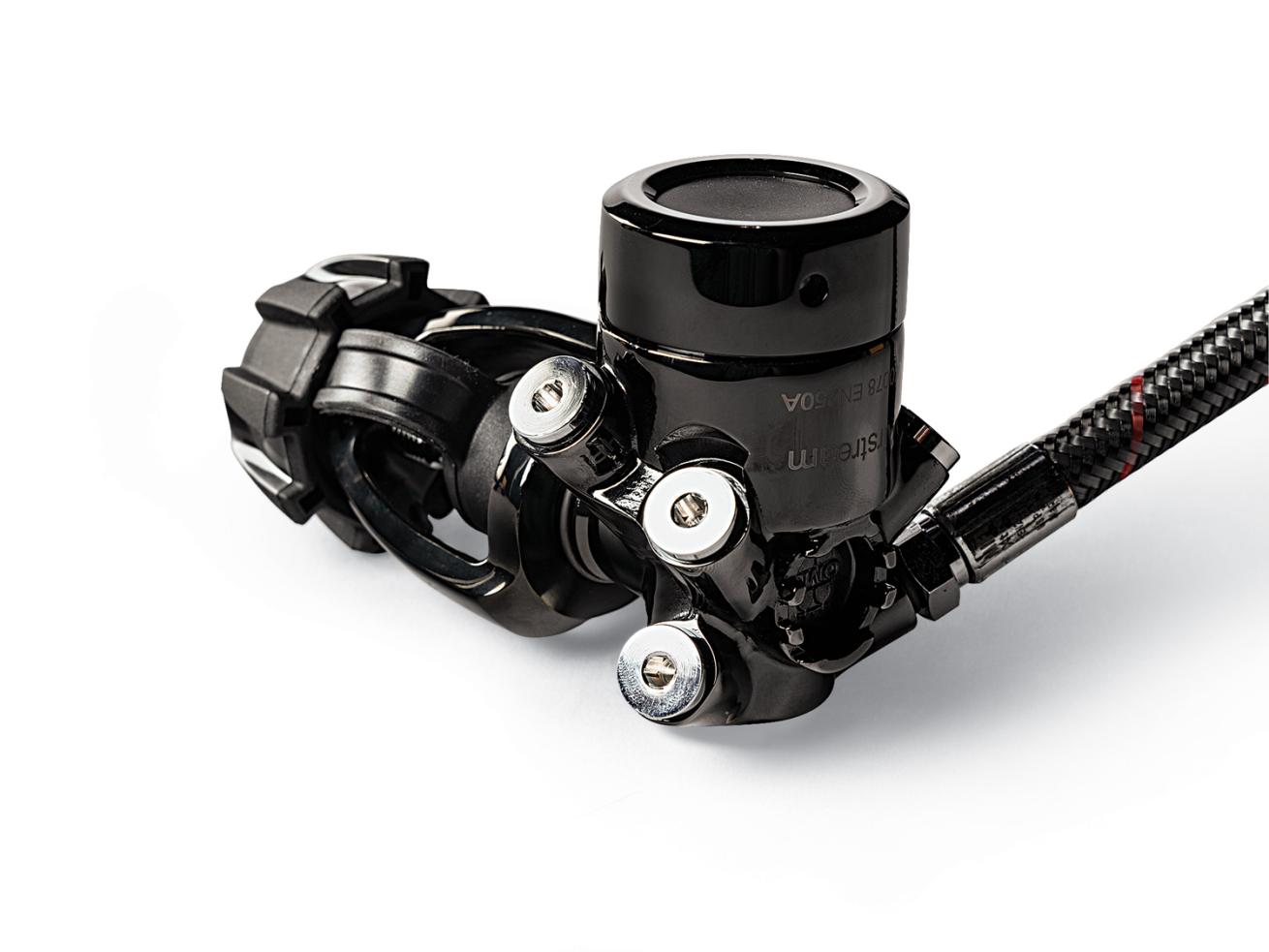
Jon WhittleOMS Airstream Evoque First Stage
The most distinctive feature of the Airstream first stage is the steep, angled-down ports that bring in the hoses very close for a streamlined rig. While it can take a minute or two longer to set up or reconfigure—we couldn’t access the bottom LP fitting without taking off the top one—it makes for a pleasingly tidy arrangement in the water. Testers rated the Airstream Evoque very good for ease of breathing and dry air delivery in all positions, and found the breathing-resistance adjustment responsive. “Breathing adjustment has a wide range,” commented one diver, while another noted, “It can get really low.” In fact, some testers found it a bit prone to free-flow in heavy current with the adjustment wide open. While the Venturi lever quickly tamed any free-flow, the lever was on the stiff side to operate. One area where testers split was noise, where it was rated good overall; most found it relatively quiet, while others reported a bit of rasping during inhalation. A top contender in our test, the Airstream Evoque showed up on the favorites list of several test divers.

*Scuba Diving*OMS Airstream Evoque Breathing Simulator Results
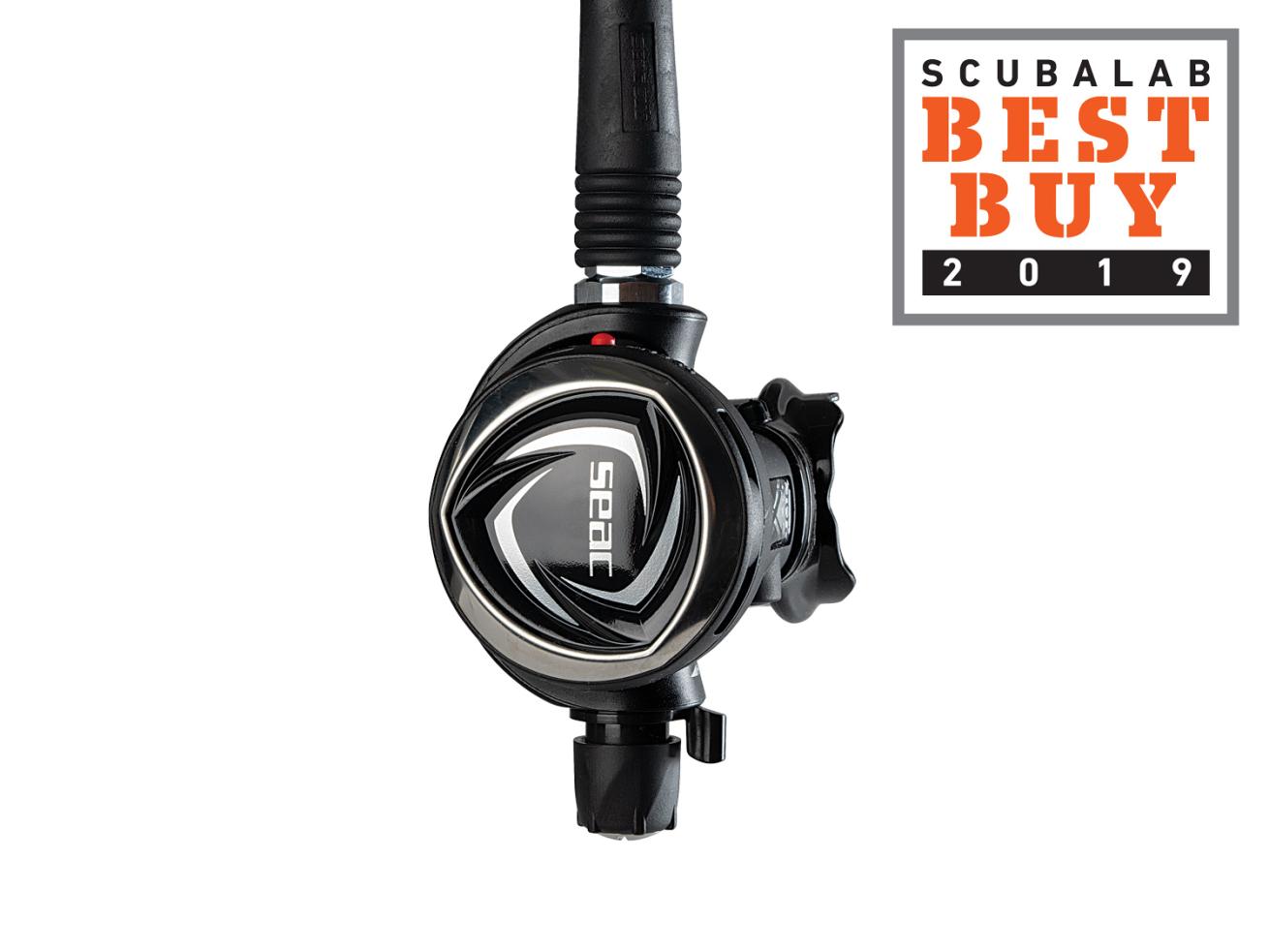
Jon WhittleSeac DX200
Price $519 | Contact seacsub.com
Seac
DX200
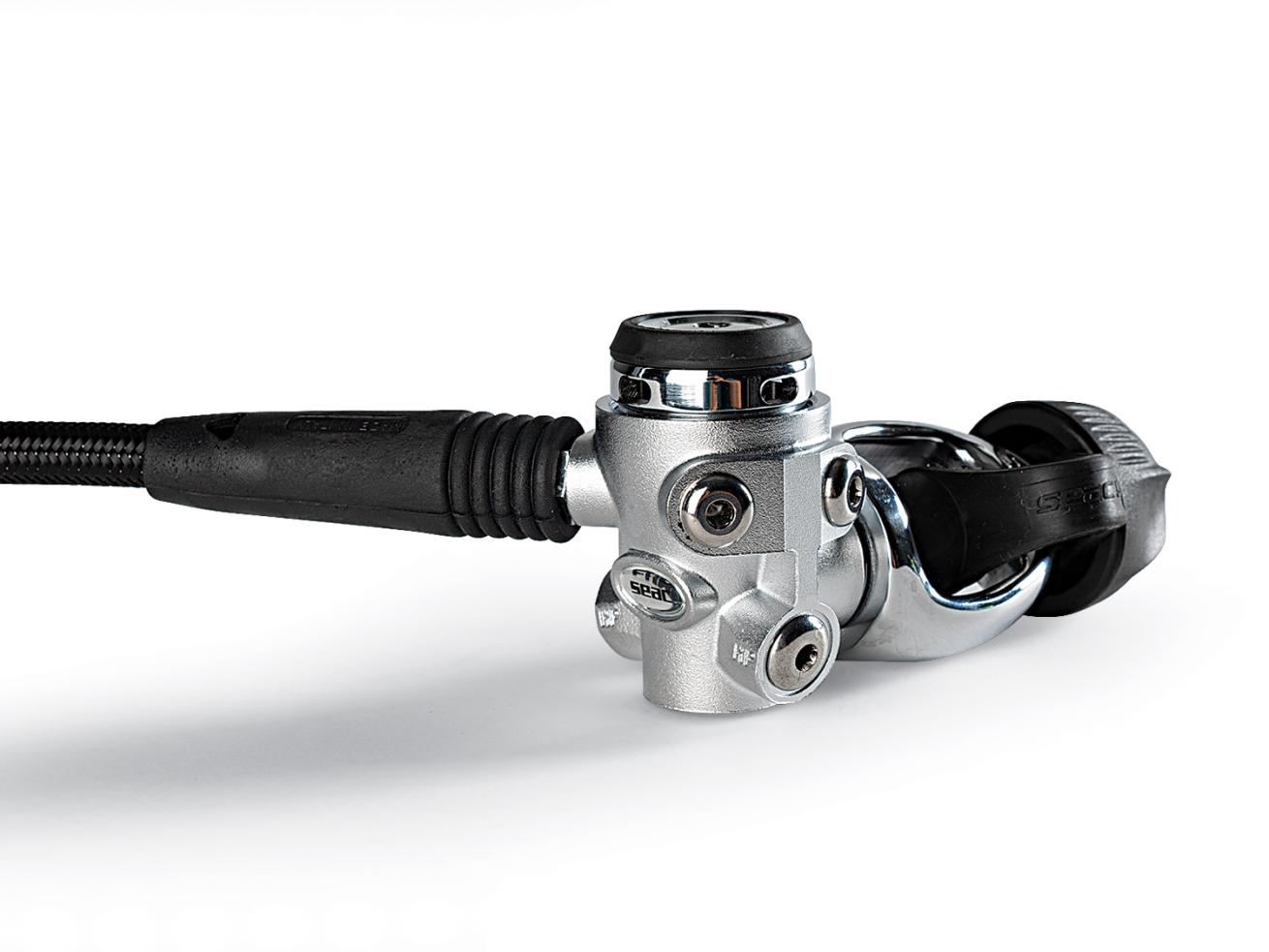
Jon WhittleSeac DX200 First Stage
Seac’s glossy flagship reg looks outwardly unchanged since we last tested it, but it’s had some updates to its internal components. On the breathing simulator, the DX200 took very good scores at all depths and breathing rates; especially noteworthy were the smooth, quiet breathing loops it spun out and its remarkably consistent breathing effort. Whether at 15, 25 or 30 breaths a minute, or at 132, 165 or 198 feet, its breathing effort never varied by more than 0.03 joules per liter—a minuscule amount. Test divers reported the same level of smooth performance in the water, with the DX200 collecting very good scores for ease of breathing and dry operation in all positions. The smooth, effective operation of the breathing adjustment took the top score with an excellent rating, and the second stage was rated very good for comfort. “Hard to find anything not to like about this reg,” noted one tester, and indeed it was selected among the favorites of most test divers. With solid, smooth performance all around, the DX200 is our Best Buy.

*Scuba Diving*Seac DX200 Breathing Simulator Results
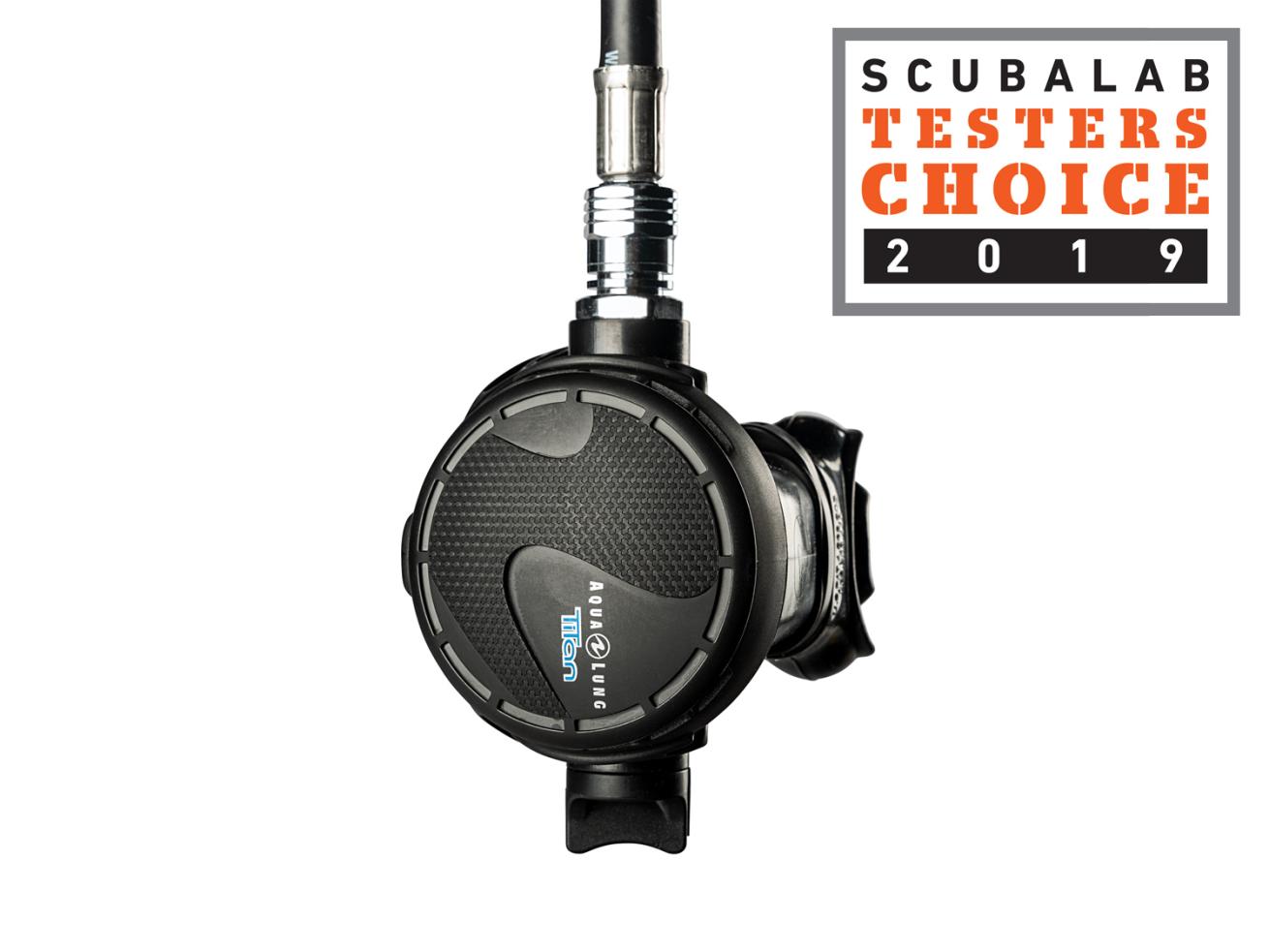
Jon WhittleAqua Lung Titan
Price $399 | Contact aqualung.com
Aqua Lung
Titan
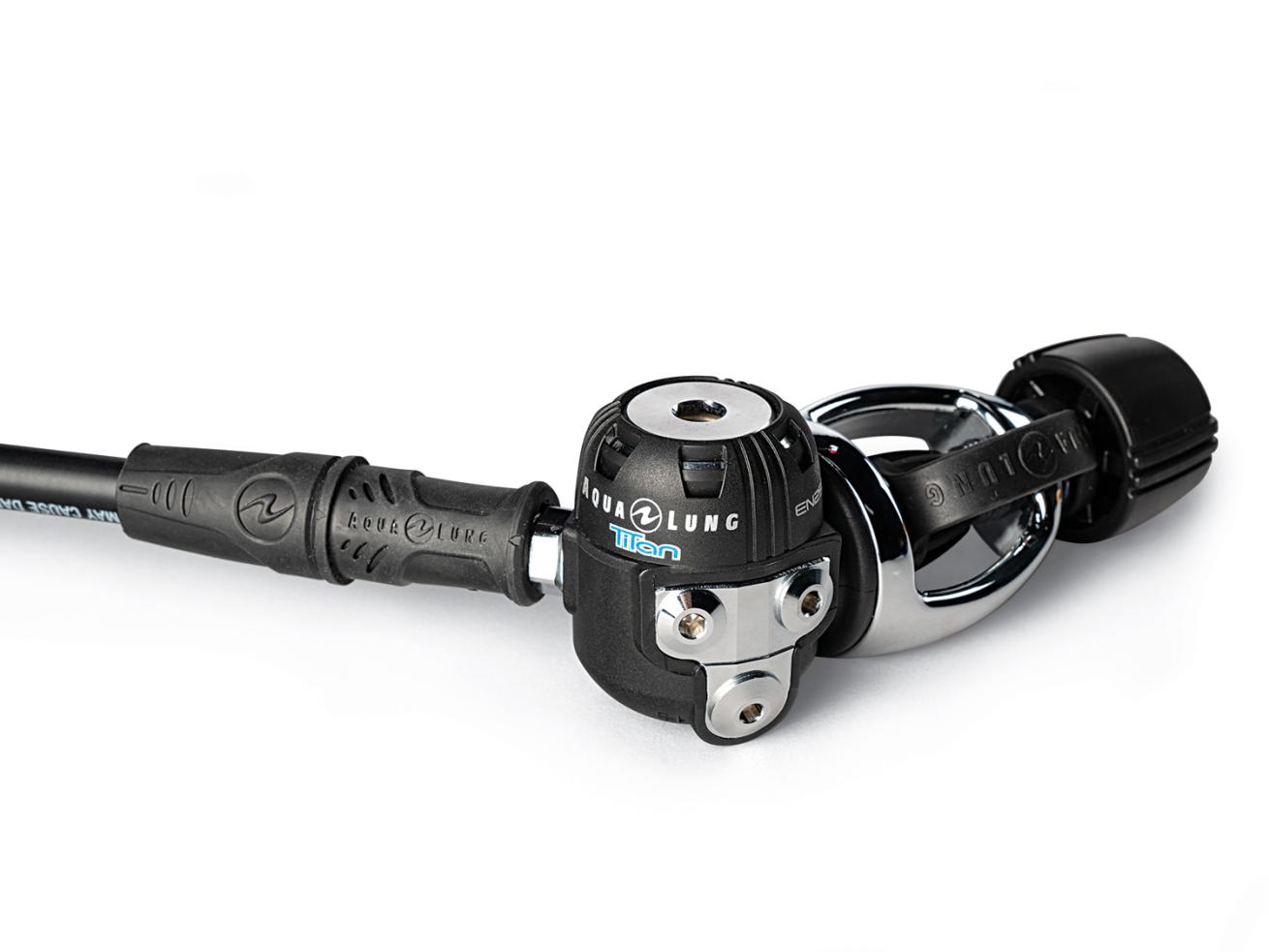
Jon WhittleAqua Lung Titan First Stage
On the breathing simulator, the Aqua Lung Titan was the only reg in its category to collect excellent work-of-breathing scores across all of our standard depths and breathing rates; in fact, it was still going strong after we pushed it below 250 feet. Equally impressive in the water, it took very good scores from test divers for dryness and ease of breathing in all positions. “Quiet and smooth—a real pleasure to use,” one tester commented. The ergonomic Venturi control proved quite effective, managing to stop free-flows even while the reg was still face up. The soft polyurethane cover gives the purge just the right amount of stiffness and can also be removed easily, without tools. “Almost forgot I had it in my mouth,” was a typical tester response to the lightweight second stage. The compact first stage has two HP and four LP ports in a T-shaped arrangement that allowed easy setup. With Herculean performance and impressive comfort, the Titan was overwhelmingly picked by test divers as a favorite. It is our Testers Choice for regulators under $500.

*Scuba Diving*Aqua Lung Titan Breathing Simulator Results
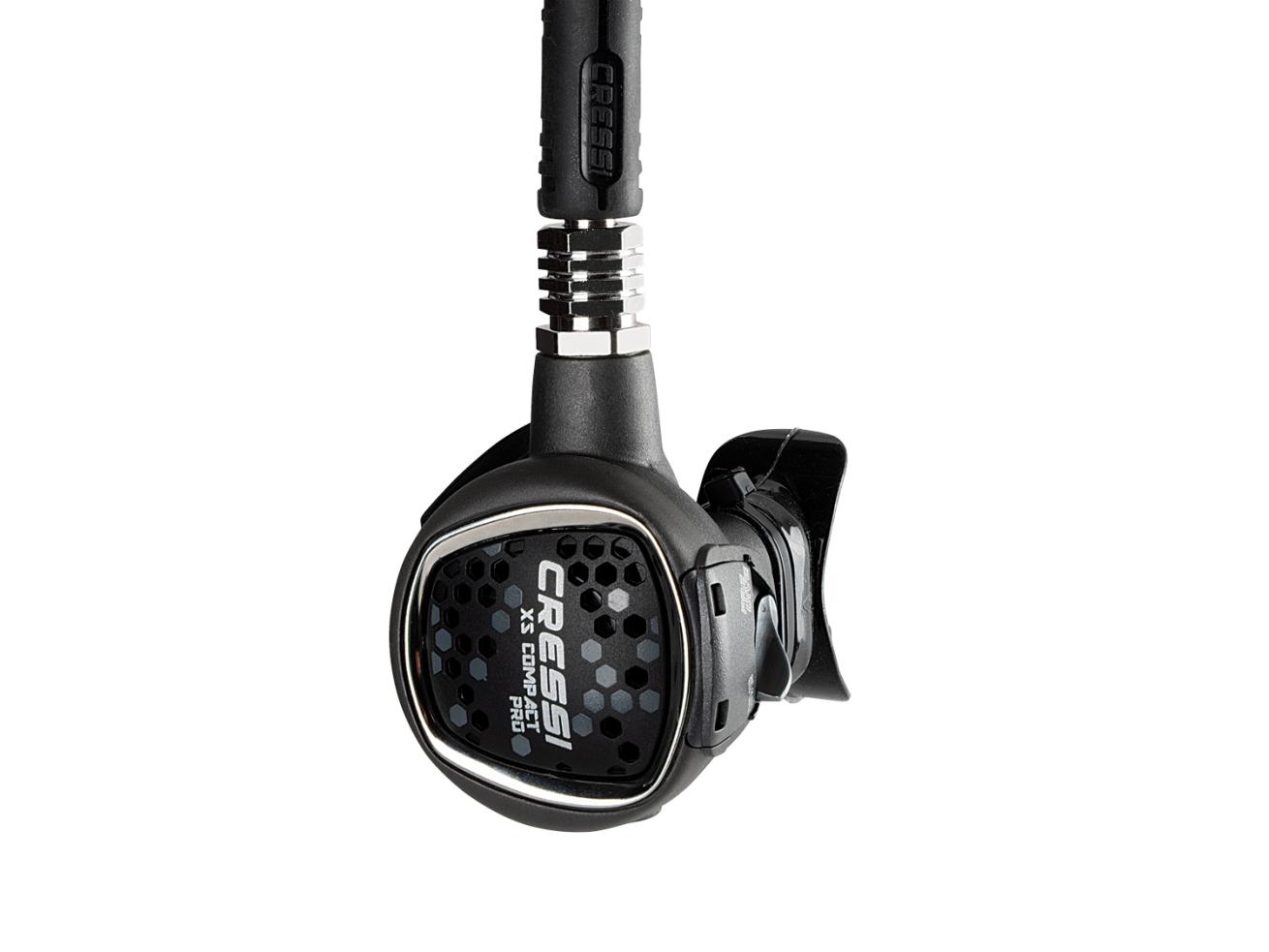
Jon WhittleCressi T10-SC Cromo Compact Pro
Price $449.95 | Contact cressi.com
Cressi
T10-SC Cromo Compact Pro
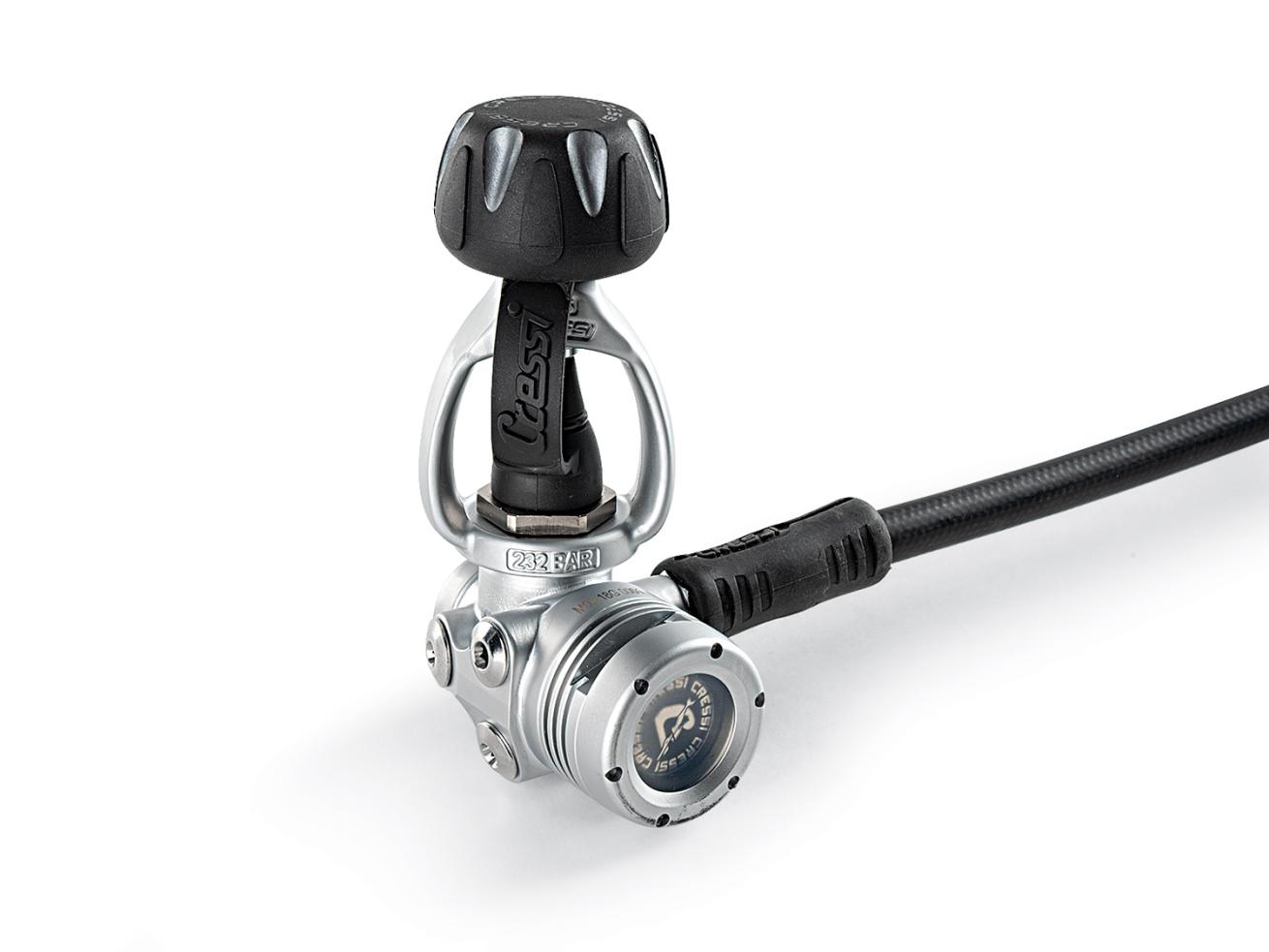
Jon WhittleCressi T10-SC Cromo Compact Pro First Stage
The Cressi Cromo Compact pairs the capable T-10 first stage with a lightweight second stage for a reg that’s simple but quiet and comfortable. Test divers rated it very good for ease of breathing in swim and head-down positions, and very good for dry operation even in the challenging face-up and head-down positions. It took the top score for comfort in its category, thanks to the teeny-tiny second stage made of featherweight plastic. “Light and comfy,” one test diver commented. “No second stage feels lighter in my mouth,” noted another. Some test divers complained that the purge seemed stiffer than necessary, but the second stage’s small internal volume helped it score highly for ease of clearing. The top-mounted Venturi switch was intuitive and very easy to operate, although divers were divided as to its effectiveness. The Cromo Compact earned good and very good scores on the breathing simulator; hose routing was easy and streamlined thanks to the compact arrangement of ports on the environmentally sealed first stage.

*Scuba Diving*Cressi T10-SC Cromo Compact Pro Breathing Simulator Results
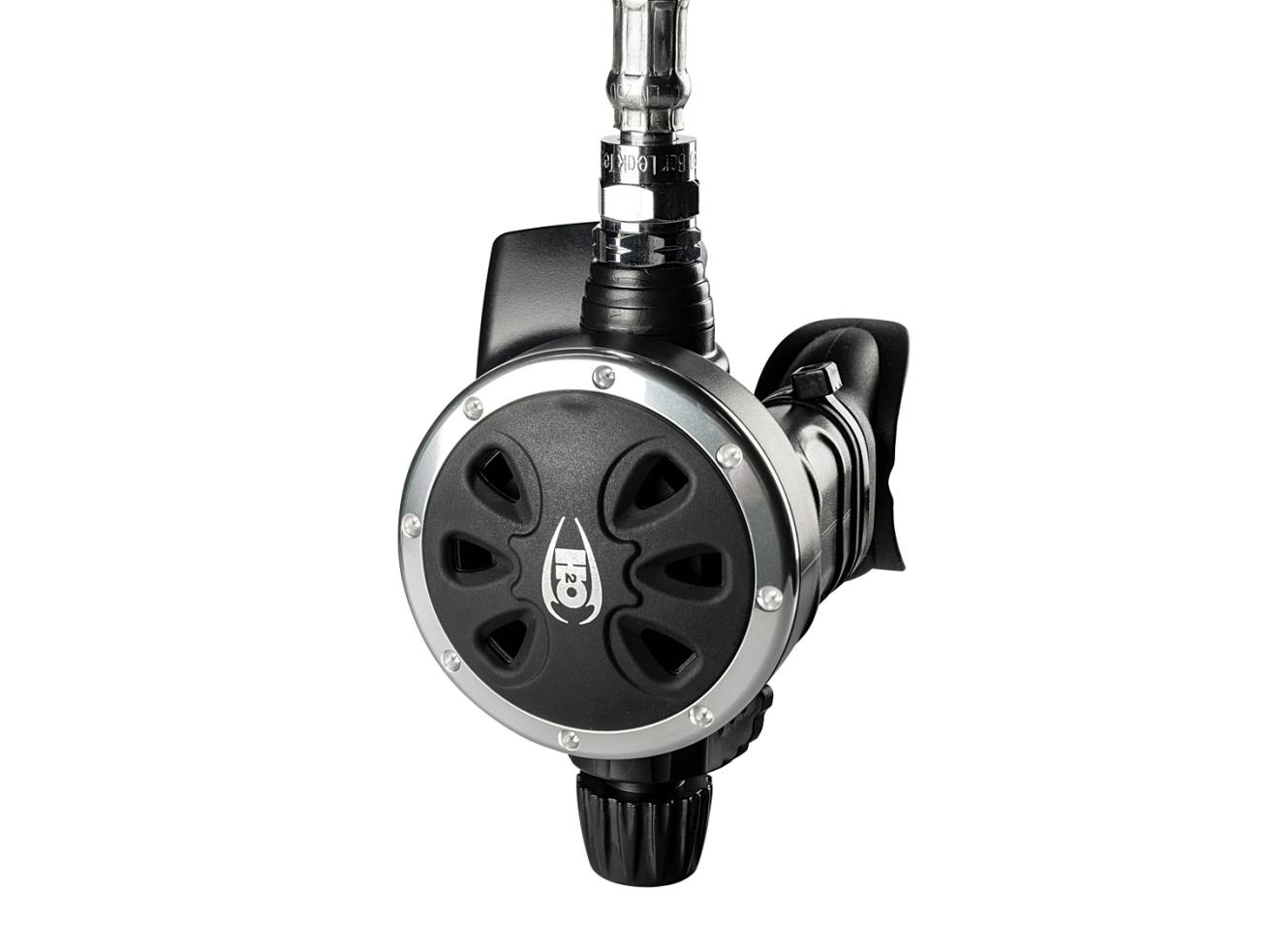
Jon WhittleH2Odyssey Elite RXE
Price $380 | Contact h2odyssey.com
H2Odyssey
Elite RXE
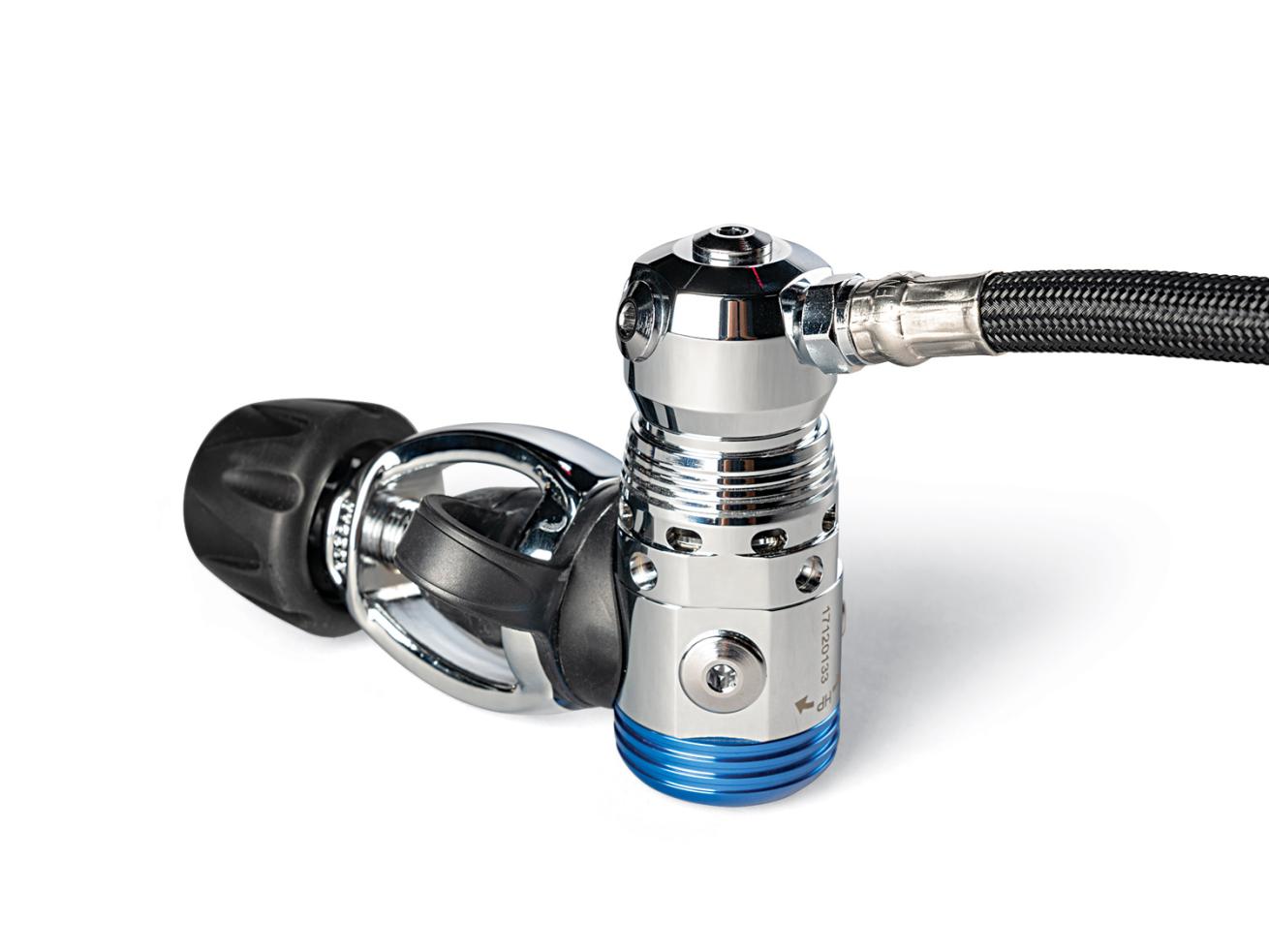
Jon WhittleH2Odyssey Elite RXE First Stage
On the simulator, the RXE garnered excellent and very good work-of-breathing scores. In the water, testers noticed the same smooth performance, scoring it very good for ease of breathing in all positions. “Super easy to breathe,” commented one tester. Some divers noted the second stage, with its wide exhaust ports, was a little bigger than some others—“chunky,” commented one test diver—although they rated it good overall for comfort, and the wide ports helped it tie the top score for low bubble interference. The Venturi switch and breathing-adjustment knob were easy to reach and operate, and were rated very good for effectiveness and ergonomics. While divers rated the RXE very good for ease of clearing, multiple testers felt the purge was a little too stiff and forceful for their liking. The balanced-piston first stage has a rotating turret for convenient hose alignment, but also a relatively high profile that required careful BC placement to keep clearance to prevent head bumping. The Elite RXE was chosen among the favorites of multiple testers.

*Scuba Diving*H2Odyssey Elite RXE Breathing Simulator Results
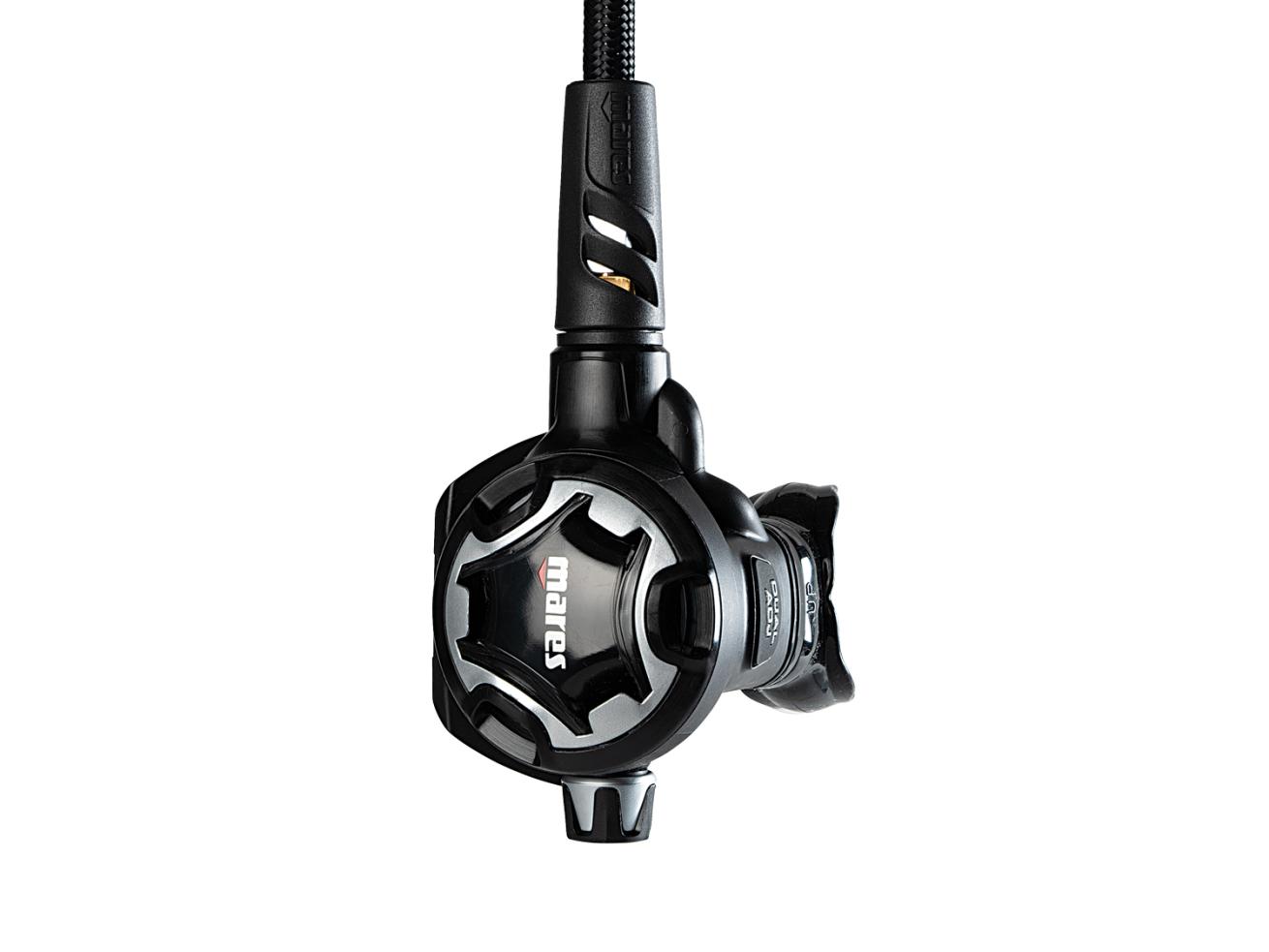
Jon WhittleMares Dual ADJ 52X
Price $490 | Contact mares.com
Mares
Dual ADJ 52X
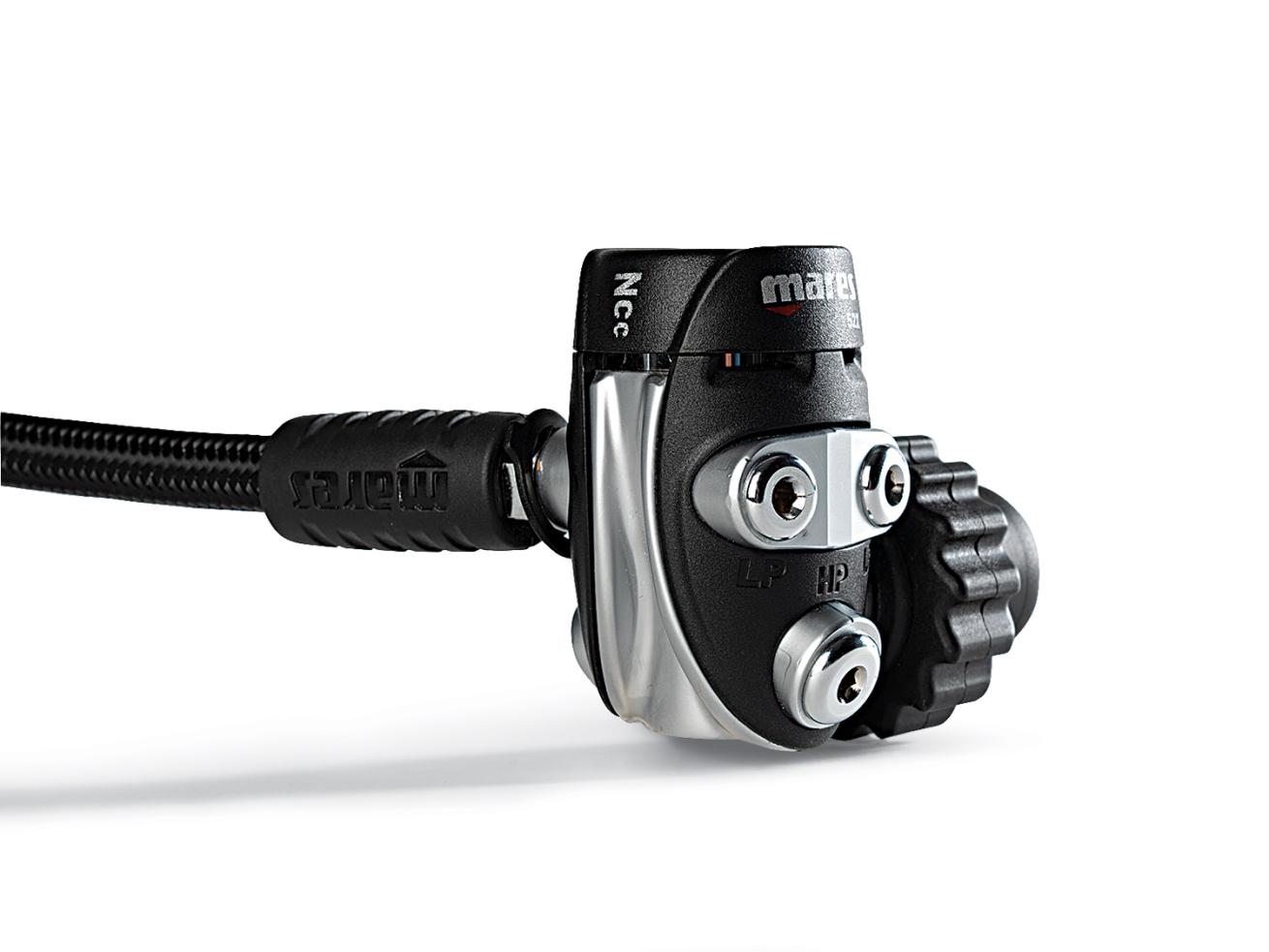
Jon WhittleMares Dual ADJ 52X First Stage
The Dual doesn't have the Twin Power feature like the other Mares regs here. But like them, it does have an air-bypass tube into the right side of the mouthpiece designed to create a low-pressure area that helps hold open the diaphragm during inhalation, reducing the diver’s breathing effort. During our simulator runs to recreational depths, the Dual had the second-lowest work of breathing in its category, and test divers scored it very good for ease of breathing during our in-water dive evaluation. “Effortless, dry breathing in all conditions,” one tester commented. The 52X first stage is compact, with slightly angled ports for straightforward hose routing. The second stage, made of a lightweight polymer, is lighter than it looks and was rated very good for comfort. Out of the water, the reg “honks like an air horn,” one tester complained, but otherwise, divers rated it good for noise. The effect of the breathing adjustment wasn’t as pronounced as that of the Twin Power control of the other Mares regs, but testers rated it very good for effective and easy operation.

*Scuba Diving*Mares Dual ADJ 52X Breathing Simulator Results
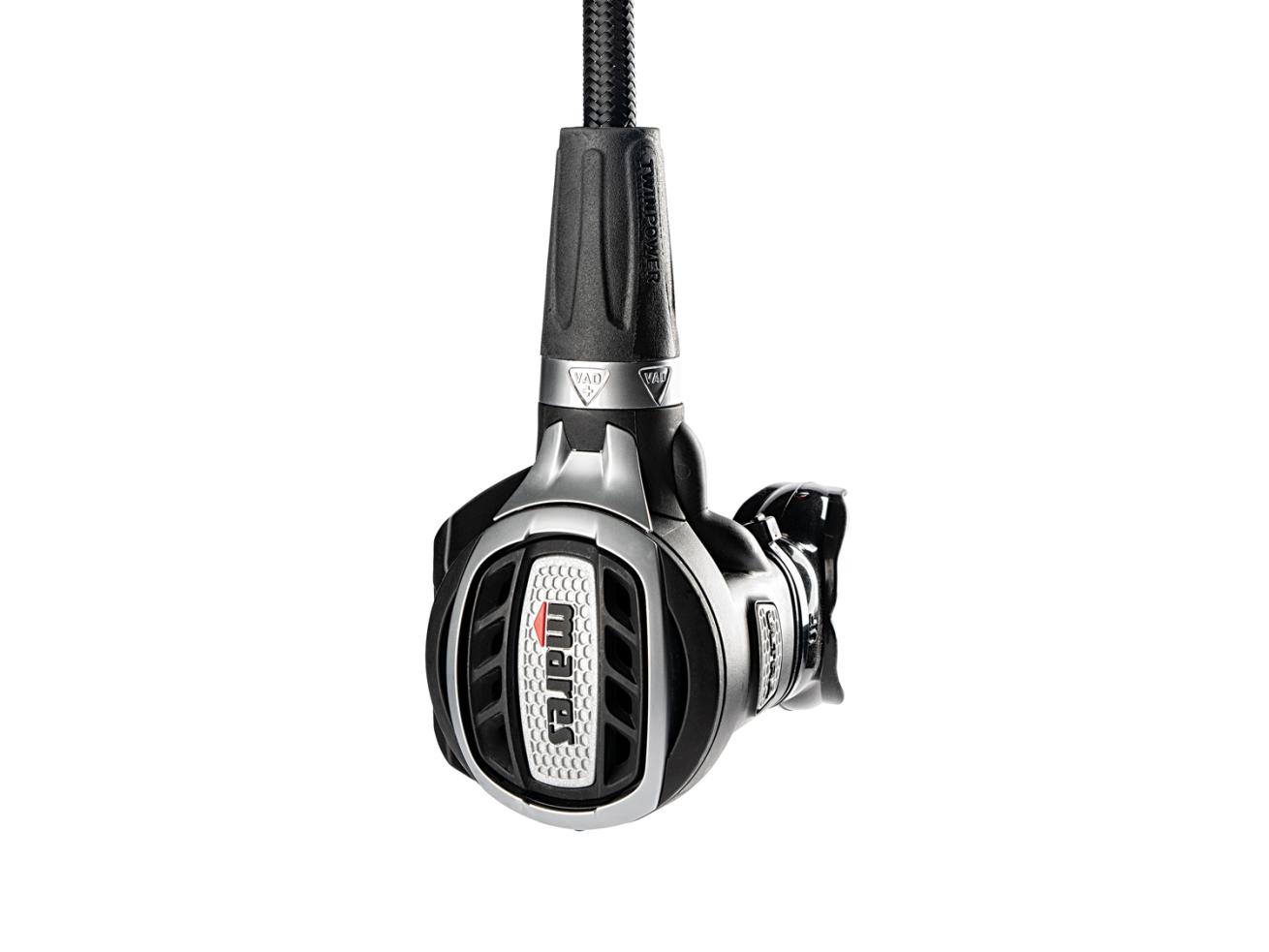
Jon WhittleMares Ultra 72X
Price $490 | Contact mares.com
Mares
Ultra 72X
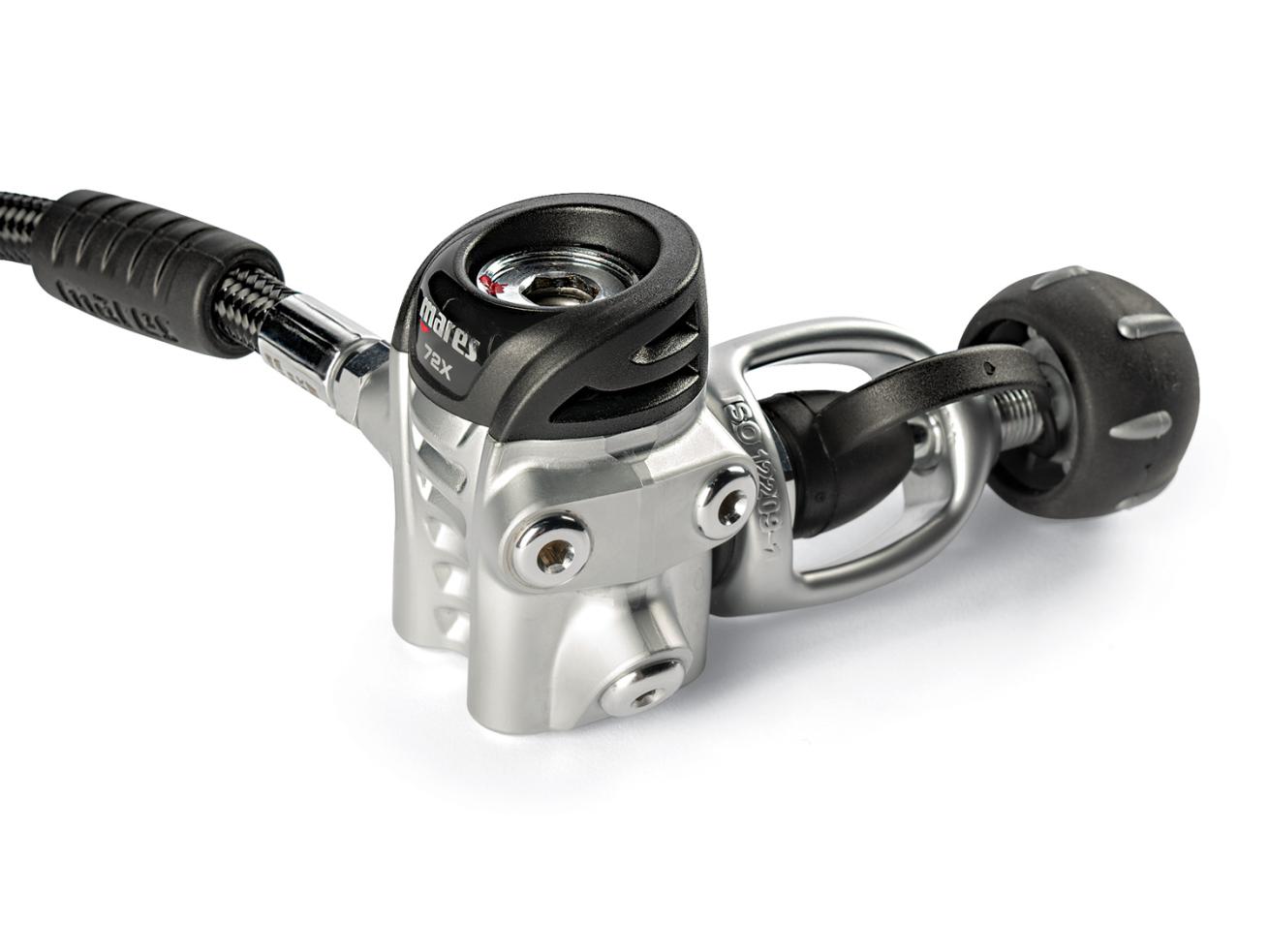
Jon WhittleMares Ultra 72X First Stage
While it has no traditional left-side breathing adjustment, the Mares Ultra is equipped with a right-side Twin Power flow control that boosts air delivery with a twist of the throttlelike control knob to provide what Mares calls “unbridled performance.” Our breathing simulator results showed they weren’t kidding; no reg in our test recorded lower breathing effort across the board than the Ultra. Even 300 feet deep in the simulator at a high breathing rate, the Ultra was moving air more easily than most regs in the test did at 200 feet. In the water, test divers scored it excellent for ease of breathing in swim position and very good in other positions. Chosen among the favorites of multiple test divers, the Ultra took very good scores in every other category except for two, where it was rated good—some divers found the purge too touchy, and the second stage not as compact as they liked. But when it came to delivering easy air on demand, the Ultra’s Twin Power feature, as one diver commented, “makes breathing effortless.”

*Scuba Diving*Mares Ultra 72X Breathing Simulator Results
Tale of the Tape
We’re always intrigued by the way test divers and test machines describe the same thing in different languages, and this year’s test offered telling examples, as seen in the breathing simulator loops below.
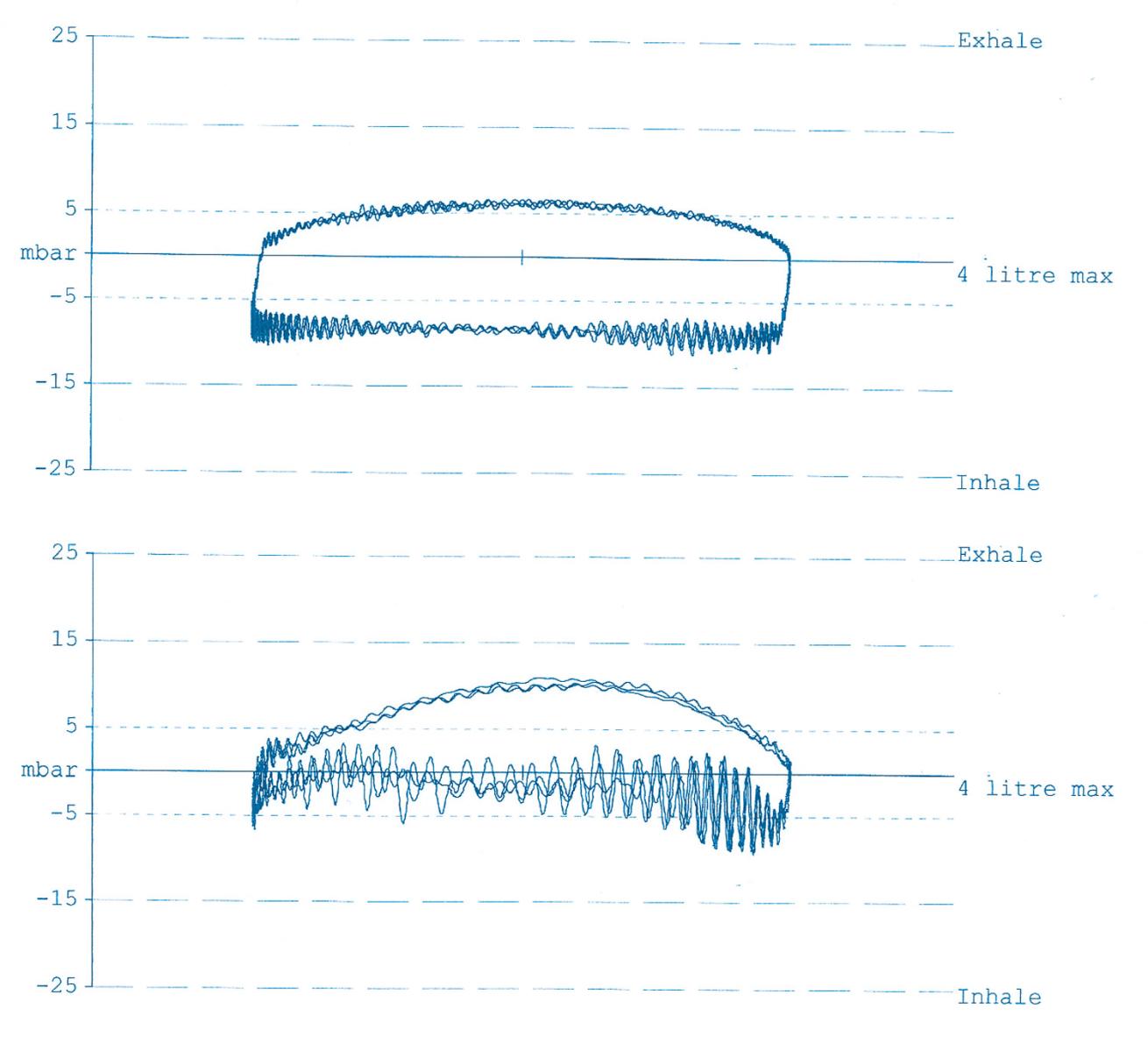
*Scuba Diving*Regulator Breathing Simulator Loops
The first loop is the Seac DX200, breathing 15 times a minute at 132 feet. (The loops go clockwise, with inhalation on the bottom and exhalation on the top.) The loop shows why so many test divers remarked on the reg’s “smooth” performance in the water.
The second loop shows the Mares Ultra ADJ 72X at a grueling 25 breaths a minute at 198 feet deep. Still, the inhalation effort measured by the simulator is practically zero—exactly what test divers meant when they described the reg’s “effortless” breathing.
Ask Roger
Q: Why do some regs have a breathing-adjustment knob, but no Venturi control?
A: Many regs with only a breathing adjustment use the same knob to control the Venturi. Most of the movement in
the adjustment range controls the inlet valve spring tension to change the breathing resistance, but the last little quarter- or half-turn clockwise moves a deflector inside the second stage to disrupt the Venturi and help prevent free-flows.
Q: Why don’t you score reg mouthpieces for comfort?
A: Actually, we do ask test divers to score mouthpieces. But we don’t figure those into our overall scores because mouthpiece comfort is so individualized, and because it’s easy and inexpensive to swap for a replacement or a custom mouthpiece like SeaCure.

